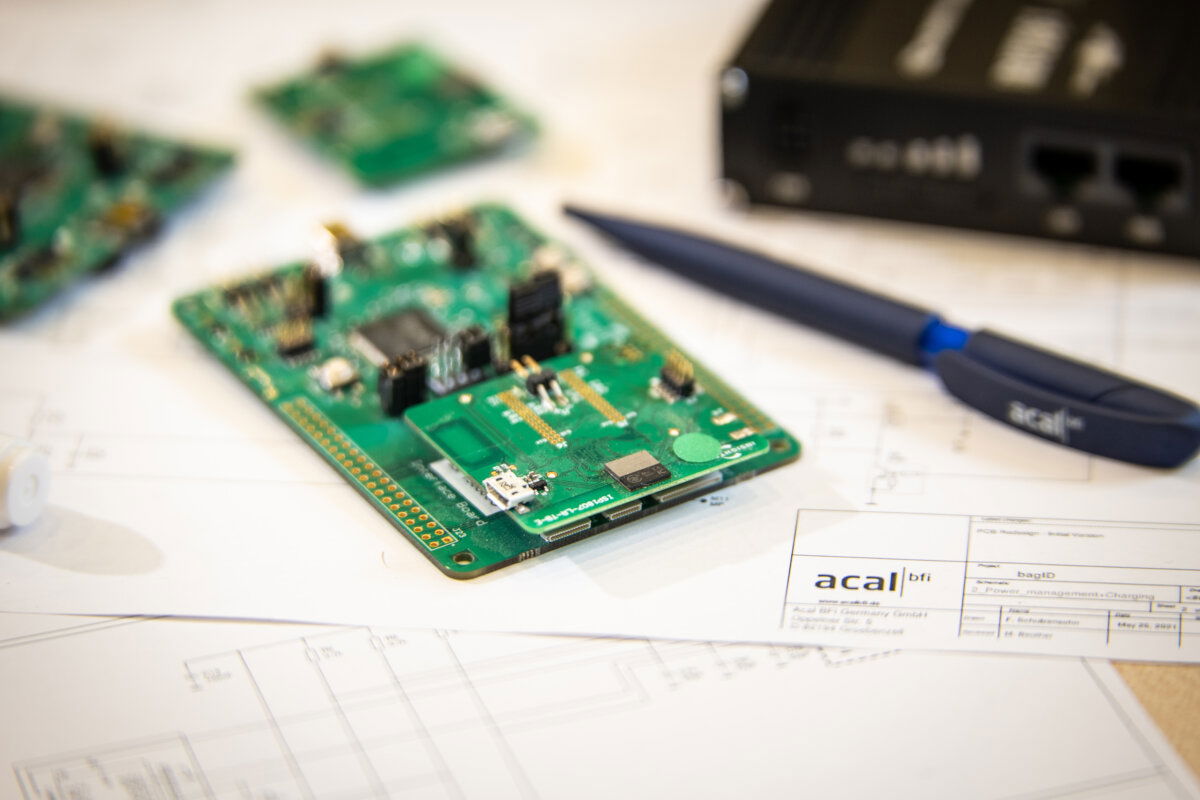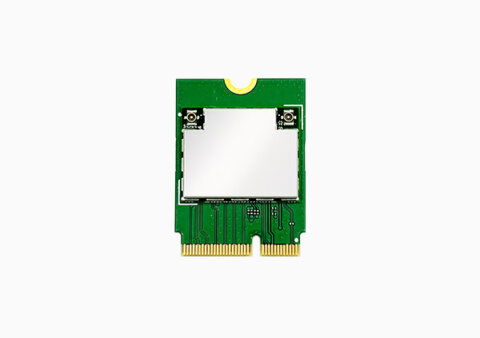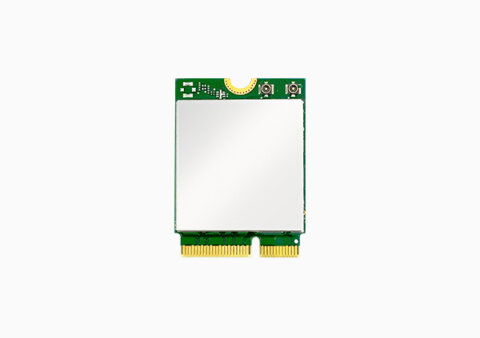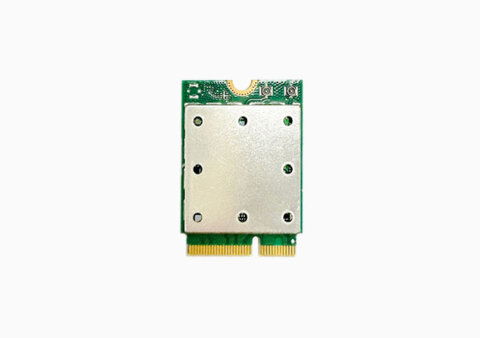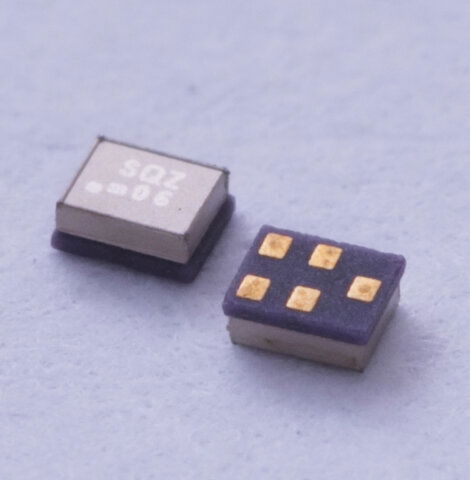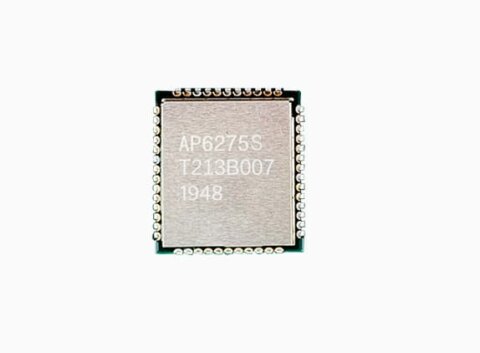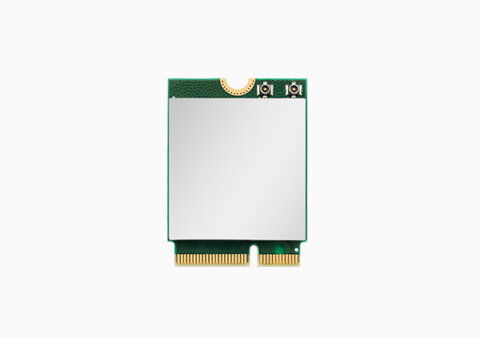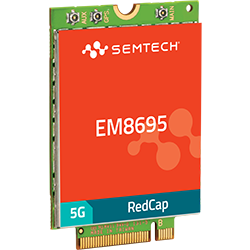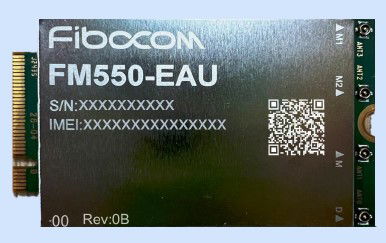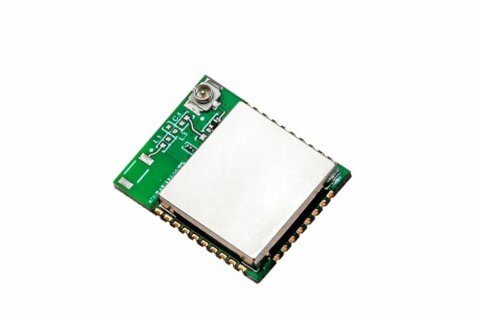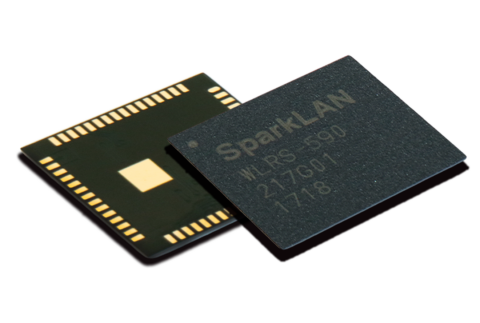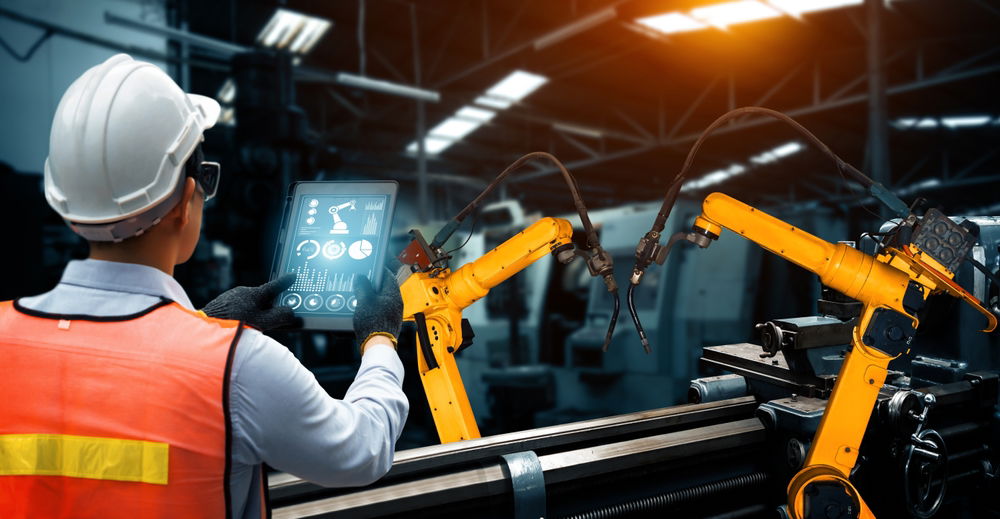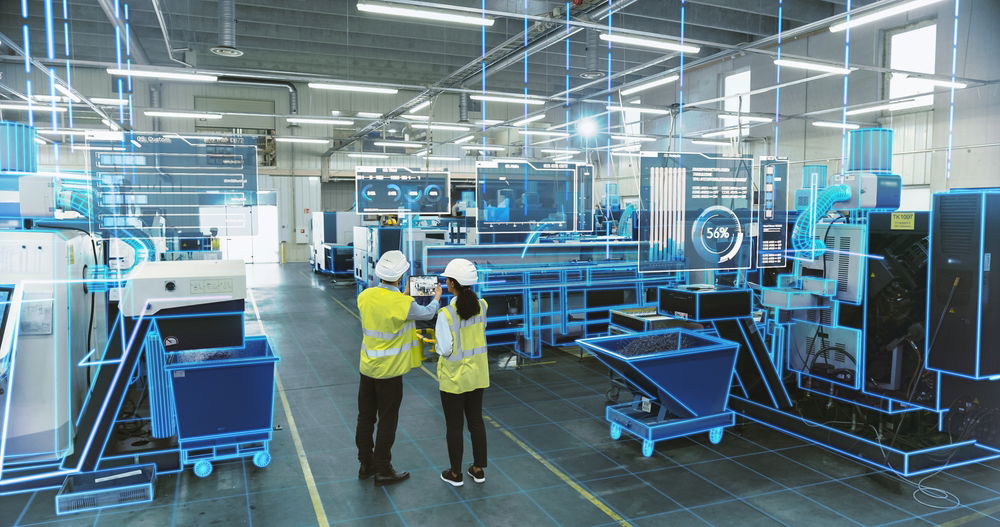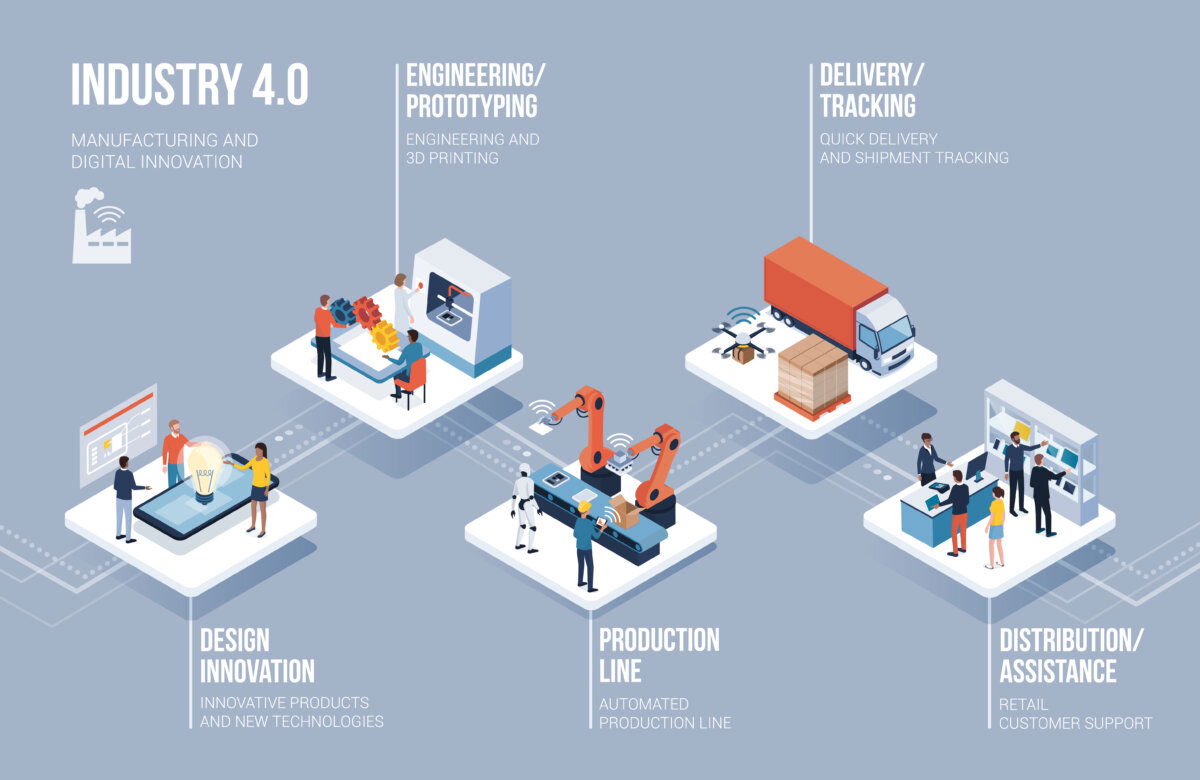Wi-Fi 7 explained: The next generation of high-speed, industrial & IoT connectivity
Wi-Fi 7 (IEEE 802.11be) represents the next generation of wireless networking, delivering up to 46 Gbps peak throughput, ultra-low latency (< 1 ms), and the ability to support massive device densities, making it ideal for industrial, IoT, and enterprise networks.
Table of contents
- Evolution of Wi-Fi7
- Benefits of Wi-Fi 7
- Key Features and Technical Specifications
- Wi-Fi 7 Devices and Hardware
- Certification, Regulatory, and Compliance Requirements
- Industrial Use Cases and Applications
- Strategic and Business Considerations
- Market Competition and Strategic Positioning
- Emerging Opportunities
- Conclusion

Introduced by the Wi-Fi Alliance as the most advanced standard to date, it extends beyond consumer connectivity to address the stringent performance, reliability, and scalability requirements of industrial, IoT, and enterprise environments.
Its innovative features, including Multi-Link Operation (MLO) 320 MHz channels, and 4096-QAM, and enhanced modulation techniques, are tailored not only for consumer use but also for the demanding requirements of demanding industrial, IoT and enterprise environments. As industries accelerate automation, digital transformation, and data-driven processes, Wi-Fi 7 is set to become the true enabler of smart factories, healthcare, logistics, and many other applications, ushering in a new era where wireless connectivity can rival or surpass wired Ethernet performance while retaining the flexibility and cost-efficiency of wireless deployment.
See our range of Wifi 7 modules here:
Evolution from Wi-Fi 6/6E and its implications for industry & IoT
Wi-Fi 7 doubles channel bandwidth and improves modulation, enabling deterministic latency and high-density connectivity for industrial and IoT applications.
Enabling unprecedented automation, efficiency, and integration of physical and digital systems, Wi-Fi 7 doubles maximum channel bandwidth from 160 MHz to 320 MHz and boosts modulation to 4096-QAM, enabling up to 2.4× faster throughput than Wi-Fi 6/6E. Wi-Fi 7 is a new approach to wireless connectivity’s role, particularly in IoT and IIoT sectors.
For industrial and IIoT applications, this evolution means deterministic latency, predictable reliability, and high-density connectivity, supporting automation, data analytics, and digital-twin systems at unprecedented scale.

What are the benefits of Wi-Fi 7 compared to Ethernet, 5G, and LoRa?
Wi-Fi 7 offers multi-gigabit speeds, low latency, and wireless flexibility, bridging the gap between wired Ethernet, 5G, and LPWAN solutions for industrial deployments. Wi-Fi 7 is uniquely suited to meet the demands of dense IIoT deployments. In doing so, it brings wireless networking close to parity with wired Ethernet in terms of speed and reliability, while retaining the advantages of wireless agility and cost-effectiveness.
When compared to 5G, Wi-Fi 7 is superior in local control, cost efficiency, and indoor performance, making it a great choice for in-building networks. Even though LoRa is a useful choice for long-range IIoT applications with minimal data needs, Wi-Fi 7 opens a much wider door to next generation-smart devices and applications that require real-time performance.
Connectivity standards comparison
| Specification | Wi-Fi 6 (802.11ax) | Wi-Fi 6E (802.11ax, 6 GHz) | Wi-Fi 7 (802.11be) | Ethernet (10 GbE) | 5G (NR, Sub-6 / mmWave) | LoRa / LoRaWAN |
|---|---|---|---|---|---|---|
Peak Throughput | Up to 9.6 Gbps | Up to 9.6 Gbps | Up to 46 Gbps | 1–10 Gbps (wired) | Up to 10 Gbps (mmWave) | 0.3–50 kbps |
Channel Bandwidth | 20–160 MHz | 20–160 MHz | Up to 320 MHz | N/A (wired medium) | Up to 400 MHz (mmWave) | 125 kHz–500 kHz |
Modulation | 1024-QAM | 1024-QAM | 4096-QAM | N/A | 256-QAM | Chirp Spread Spectrum |
Latency | ~2–10 ms | ~2–10 ms | < 1 ms (deterministic) | < 1 ms | 1–10 ms (sub-6) / < 1 ms (mmWave) |
|
Frequency Bands | 2.4 GHz / 5 GHz | 2.4 GHz / 5 GHz / 6 GHz | 2.4 GHz / 5 GHz / 6 GHz (multi-link) | N/A | Licensed sub-6 GHz / mmWave | Sub-GHz (433–928 MHz) |
Range | Up to ~50 m (indoor) | ~40 m (6 GHz) | ~30 m (6 GHz) | 100 m+ (wired) | Up to 10 km (sub-6) | Up to 15+ km |
Device Density | High (hundreds/AP) | High (hundreds/AP) | Ultra-high (thousands/AP) | Moderate | Very High (massive mMTC) | Low |
Mobility | Local | Local | Local / campus | None | High (cellular mobility) | Low |
Security | WPA3 | WPA3 | Enhanced WPA3 + secure MLO | Physical isolation | SIM-based / network-grade | AES-128 |
Power Efficiency | Target Wake Time (TWT) | TWT | TWT 2.0 + adaptive modulation | N/A | Network-scheduled | Optimised for battery devices |
Deployment Cost | Low | Low-Moderate | Moderate (new hardware) | Moderate-High | High (licensed spectrum) | Low |
Best For | General enterprise, IoT | High-density enterprise, AR/VR | Industrial IoT, smart factories, edge computing | Fixed infrastructure | Wide-area, mobile industrial control | Low-power, long-range sensors |
Ultimately, the choice between Wi-Fi 7, Ethernet, 5G, and LoRa is down to the needs of each user. However, Wi-Fi 7’s inclusion of Multi-Link Operation, much wider frequency channels, and ultra-dense device support makes it more intelligent and adaptive than any of its predecessors or contemporaries.
-
Versus Ethernet: Offers comparable multi-gigabit performance with lower deployment cost and full mobility.
-
Versus 5G: Excels in indoor performance, cost efficiency, and local control, ideal for private industrial networks.
-
Versus LoRa: Enables real-time, high-bandwidth applications that low-power, long-range technologies cannot support.
The result is a wireless standard capable of matching wired reliability while maintaining the agility necessary for fast-evolving digital ecosystems.

Wi-Fi 7 unlocks new freedom in how connected systems are built and deployed.
It provides the performance and reliability once limited to wired Ethernet – without the cabling constraints – making it easier to design flexible, scalable network architectures. Compared to 5G, its local control and cost advantages simplify prototyping and integration for private industrial environments. And unlike LoRa, it supports real-time, high-throughput data exchange essential for advanced automation, edge analytics, and next-generation sensor networks. In short, Wi-Fi 7 enables engineers to design smarter, faster, and more efficient systems for Industry 4.0 and beyond.
Key features and technical specifications
Wi-Fi 7 (IEEE 802.11be) combines multi-link operation, 320 MHz channels, advanced modulation, and enhanced resource management to deliver deterministic, high-speed connectivity. Its innovations – including Multi-Link Operation (MLO), 320 MHz channel bandwidth, 4096-QAM modulation, enhanced MU-MIMO/OFDMA resource management, and power-optimised communication – work together to create a wireless network capable of deterministic performance even in high-density, mission-critical environments.
For guidance on integrating Wi-Fi 7 into your industrial systems.
Our experts can help you take full advantage of Wi-Fi 7 technology, from evaluating the latest modules to integrating them seamlessly into your next-generation designs. With our deep wireless expertise and access to leading manufacturers, we provide tailored support for faster, more reliable, and energy-efficient connectivity solutions.
Contact us today to find out how we can help you integrate Wi-Fi 7 into your application.
Wi-Fi 7 devices and hardware
Discover how Wi-Fi 7 redefines wireless connectivity by combining ultra-high throughput, sub-millisecond latency, and exceptional efficiency. Below, we explore how its performance compares with Wi-Fi 6/6E, Ethernet, 5G, and LoRa, highlight its advantages for industrial and IoT applications, and share key engineering considerations for seamless integration into next-generation designs.
Wi-Fi 7 vs. Wi-Fi 6/6E and other connectivity standards
Wi-Fi 7 is the next evolution of wireless connectivity, delivering unprecedented performance that brings wireless networks closer to the speed, reliability, and determinism traditionally associated with wired Ethernet. For engineers designing industrial, IoT, or embedded systems, Wi-Fi 7 is not just an incremental upgrade – it’s a transformative technology enabling high-throughput, low-latency, and scalable wireless designs.

Overview: performance and competitive positioning
Wi-Fi 7 closes the gap with wired Ethernet and outperforms alternative wireless solutions, including 5G and LoRa, particularly in dense, high-data-rate environments. Key advantages include:
- Peak throughput: Up to 46 Gbps
- Deterministic latency: <1 ms
- Indoor coverage: Up to 30 m at 6 GHz
- Device density: Hundreds of devices per access point
- Frequency support: Multi-band (2.4, 5, 6 GHz)
Comparisons:
Versus Wi-Fi 6/6E: Wi-Fi 7 increases peak throughput by 2–3x, reduces latency to sub-millisecond levels, and adds Multi-Link Operation (MLO) for simultaneous transmissions across bands.
Versus 5G and LoRa: Wi-Fi 7 offers superior in-building coverage and supports massive device densities, making it ideal for industrial, commercial, and IoT applications.

Key product ranges
Key capabilities for industrial and IoT design
Engineering advantages: performance, mobility, and flexibility
-
Performance vs. Ethernet: While wired Ethernet remains the gold standard for ultra-reliable connections, Wi-Fi 7’s peak speeds rival or exceed many legacy wired options such as Gigabit Ethernet.
-
Latency and stability: Multi-link failover and interference mitigation ensure low-latency, high-reliability operation even in harsh RF environments.
-
Mobility and deployment flexibility: Ideal for dynamic IIoT or industrial workspaces where wiring is restrictive or costly.
-
Scalability: Supports massive device densities across multiple frequency bands, ideal for smart factories, logistics, and infrastructure systems.
-
Power efficiency: Optimised for battery-powered IoT devices using adaptive modulation, intelligent scheduling, and dynamic balancing of throughput, reliability, and power consumption.
Practical engineering considerations
-
Antenna isolation: Critical to prevent cross-band interference in multi-band environments.
-
Thermal management: High-throughput modules can generate significant heat, requiring careful PCB and enclosure design.
-
Backward compatibility: Plan deployment to support existing Wi-Fi 6/6E infrastructure while enabling Wi-Fi 7 expansion.
-
Device placement: Optimal access point placement ensures coverage, reliability, and minimal interference.
-
Firmware and software support: Ensure drivers and protocol stacks fully support MLO, OFDMA, and power-saving features.
Rethinking wireless connectivity
Wi-Fi 7 empowers engineers to rethink what’s possible in high-performance, low-latency, and highly connected industrial and IoT applications. Its combination of:
- Near-Ethernet speeds
- Sub-millisecond latency
- Massive device density support
- Energy-efficient operation
- Advanced security
Wi-Fi 7 hardware delivers multi-gigabit, low-latency connectivity while remaining scalable and energy-efficient – opening the door to wireless designs that rival wired networks in speed, reliability, and scalability, enabling next-generation industrial, IIoT, and embedded systems.

Unlock ultra-low latency and multi-gigabit wireless performance for your next industrial or IoT project.
Certification, regulatory, and compliance requirements
Wi-Fi 7 certification programmes are well underway for a rapidly growing number of interoperable devices and hardware is set to power everything from immersive AR/VR experiences, to resilient, scalable smart cities. That said, as Wi-Fi 7 technology matures, designers must stay vigilant for emerging best practices, ongoing certification developments, and new hardware innovations to ensure that their devices remain viable in an ever-growing world of need.
This will mean passing robust certification and compliance checks from global organisations like the Wi-Fi Alliance, as well as fulfilling regional legal requirements set by regulatory bodies such as the CE in Europe and FCC in the United States.
Designers and manufacturers must also meet regional legal requirements:
- CE marking (Europe)
- FCC certification (United States)
- Ofcom (UK), MIC (Japan), and other national equivalents for RF compliance
Early engagement with compliance specialists, accredited test laboratories, and certification bodies helps ensure timely approval and market success. As Wi-Fi 7 technology evolves, ongoing monitoring of best practices, regulatory updates, and hardware innovation trends is essential to maintain long-term product viability and ensure that devices remain future-ready in an expanding and increasingly connected world.
At Acal BFi, we can support you through every stage of Wi-Fi 7 design and compliance – from component selection to certification readiness. Speak with our wireless technology experts today to ensure your next design meets every requirement.
Industrial use cases and applications
Wi-Fi 7 is set to transform industrial connectivity by enabling deterministic, low-latency communication and multi-gigabit throughput across complex, data-rich environments. Its combination of speed, reliability, and flexibility makes it the ideal backbone for Industry 4.0 applications – from real-time automation to intelligent infrastructure and edge analytics.
As industrial environments demand increasingly sophisticated and scalable wireless solutions, Wi-Fi 7’s blend of multi-link reliability, low latency, and high bandwidth positions it as the standout connectivity technology for Industry 4.0.
From smart factories and IIoT ecosystems to intelligent infrastructure and edge analytics, Wi-Fi 7 provides the foundation for a new generation of mission-critical, connected operations – enabling faster innovation, higher efficiency, and greater resilience across the industrial landscape.

Strategic and Business Considerations
Financial implications for industrial applications
From a financial perspective, the adoption of Wi-Fi 7 in industrial environments presents significant opportunities and notable returns on investment. Upfront costs will often require the replacement of legacy networking hardware, the deployment of advanced access points, and integration with existing automation and control systems. These capital expenditures, however, will be more than offset by the operational efficiencies gained through higher data throughput, reduced latency, and the ability to support a much larger number of connected devices – all of which translate to increased productivity and lower maintenance costs over time.
Higher upfront costs are offset by improved productivity, reduced downtime, and longer-term operational efficiencies.
ROI analysis for industries adopting Wi-Fi 7
Wi-Fi 7’s more efficient bandwidth usage and reduced latency means that organisations can achieve seamless real-time monitoring and control over robotic assembly lines, autonomous guided vehicles (AGVs), and quality inspection systems. This fosters greater automation, enabling swift, data-driven adjustments on the factory floor and reducing the risk of errors.
The technology’s multi-link operation and improved spectral efficiency empower IIoT organisations to deploy an unprecedented array of sensors, actuators, and controllers. This blanket of connectivity supports complex machine-to-machine communication for advanced analytics, process automation, and flexible production models on a very large scale.
Wi-Fi 7 enables the deployment of connected infrastructure in smart cities and industrial parks, including intelligent traffic management, environmental monitoring, and smart lighting – all of which rely on high-throughput, reliable wireless connections. By delivering multi-gigabit speeds and extremely low latency, Wi-Fi 7 takes edge computing to the next level, where data is processed locally at the source. This provides the ability to respond instantaneously to critical events, minimising the delays caused by cloud dependency.


Administrative considerations
There are also administrative and compliance impacts because organisations must ensure compliance with regulatory standards that govern wireless communications and industrial operations regionally, nationally, and sometimes internationally. This involves constant monitoring of certification requirements, audits, and alignment with international standards, which—although potentially costly – are essential for market access and operational integrity.

Simplified administration through Wi-Fi 7 features
Wi-Fi 7’s advanced automation, deterministic latency, and multi-link operation allow administrators to manage device performance, bandwidth allocation, and interference mitigation more efficiently, reducing network management complexity compared to legacy standards.

Organisational impact
And of course, the extensive scale and complexity of Wi-Fi 7 networks heighten data security and privacy concerns, so investments in staff training, robust cybersecurity protocols, and continuous management of risk exposure are vital to ensure the protection of intellectual property and sensitive operational processes.
Organisations must ensure they invest in workforce training; effective change management ensures that staff adapt smoothly to new workflows and technologies, which in turn maximises the return on investment.
Wi-Fi 7: A driver of digital transformation
The adoption of Wi-Fi 7 is a catalyst for digital transformation. The initial investment and increased administrative oversight requirements are counterbalanced by significant gains in operational flexibility, productivity, and competitive advantage. By enabling optimised production, facilitating advanced analytics, and reducing operational costs, Wi-Fi 7 lays the groundwork for sustainable, interconnected growth and market leadership.
Market competition and strategic positioning
Which wireless technologies compete with Wi-Fi 7?
Wi-Fi 7 faces competition from several established and emerging technologies. For example, 5G networks – with their high speeds and low latency – have expanded into enterprise and industrial environments, offering private cellular solutions for IIoT, automation, and business-critical communications. 5G’s managed spectrum, guaranteed service-level agreements, and mobility advantages make it a direct competitor in certain use cases.
The legacy Wi-Fi 6/6E standards remain relevant, particularly for organisations that have recently upgraded infrastructure. Their maturity, broad ecosystem support, and cost-effectiveness continue to attract a wide user base.
Also available are proprietary wireless solutions like Zigbee, LoRaWAN , and Bluetooth Low Energy , targeted at low-power, low-data-rate IIoT applications. While they cannot compete with Wi-Fi 7’s throughput, they remain viable alternatives in less demanding markets where battery life is a higher priority than bandwidth.
Finally, Li-Fi (Light Fidelity)and ultra-wideband (UWB) technologies may serve as alternatives -or complements -to RF-based wireless systems, especially in environments where interference or security are major concerns.
Wi-Fi 7’s Market Position and Value Proposition
Wi-Fi 7’s value lies in its ability to deliver extreme speeds, ultra-low latency, and high network efficiency to meet the evolving needs of modern digital ecosystems. With theoretical maximum throughput surpassing 40 Gbps, it outpaces previous generations while extending benefits beyond bandwidth alone.
Its enhanced multi-user capabilities and multiple device-per-access-point support make Wi-Fi 7 ideal for dense environments such as stadiums, airports, smart factories, and enterprise campuses. Features like Multi-Link Operation (MLO) and deterministic latency empower mission-critical applications such as robotic automation and real-time analytics—traditionally dominated by wired or cellular networks.
Wi-Fi 7 maintains backward compatibility, easing transitions and protecting previous investments. Additionally, by operating in unlicensed spectrum, it reduces operational expenditure and regulatory barriers when compared to licensed cellular solutions—an appealing factor for both large enterprises and SMEs.
Strategic advantages working with Acal BFi
Acal BFi enhances Wi-Fi 7 adoption by providing end-to-end support for industrial deployments, including:
-
Custom prototyping and solution design: helping organisations integrate Wi-Fi 7 into complex industrial systems before committing to full-scale deployment.
-
Compliance and certification guidance: ensuring devices meet Wi-Fi Alliance, CE, and FCC standards, streamlining regulatory approval.
-
Design integration support: assisting engineers with antenna selection, signal optimisation, and multi-band device integration to maximise throughput and reliability.
By combining technical expertise with practical deployment experience, Acal BFi helps companies reduce risk, shorten development timelines, and achieve faster ROI on Wi-Fi 7 investments.
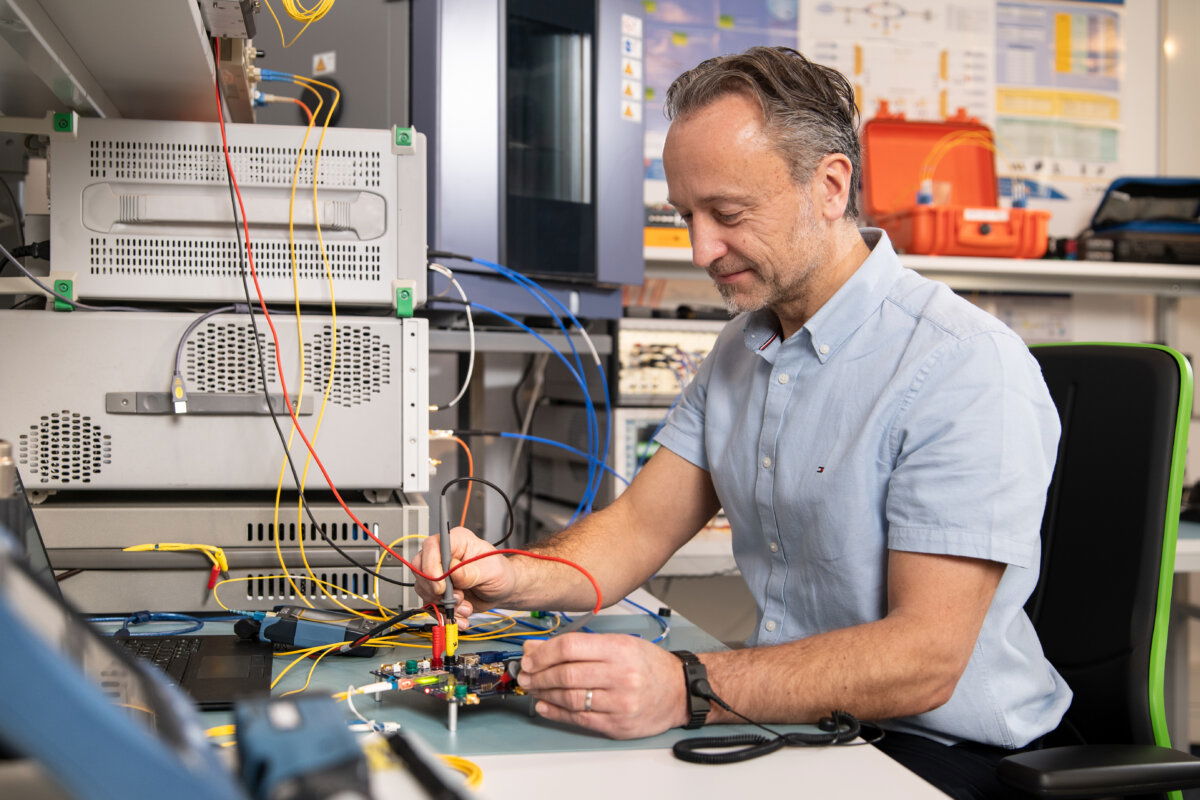
Reach out for a consultation with our experts to discuss any prototyping and integration support
Challenges to adoption
Despite its advantages, upgrading to Wi-Fi 7 can be capital-intensive, often requiring new hardware and backward-compatibility validation. Early adopters may encounter temporary device interoperability issues. Organisations must also invest in training, cybersecurity, and compliance to avoid underutilising capabilities or exposing vulnerabilities as networks scale.
Early adopters who have the means to invest in hardware may, despite thoughtful planning, be temporarily limited by new device incompatibility with legacy systems. It is also crucial that businesses, particularly industrial concerns, invest in training and change management to avoid underutilising or misusing new capabilities.
And as we’ve already seen, as networks scale, so do risks related to data privacy, cybersecurity, and compliance with evolving international regulatory standards, so those issues must be taken into consideration.

Exploring emerging opportunities
Wi-Fi 7’s open and globally standardised ecosystem fosters collaboration across the entire connectivity landscape — from chipset manufacturers and device vendors to IIoT platform providers and cybersecurity experts. This interoperability enables engineers to design systems that integrate seamlessly across suppliers and infrastructures, avoiding vendor lock-in and accelerating time to market.
Strategic partnerships with cloud providers and analytics platforms are already shaping next-generation IIoT deployments, enabling real-time data processing, device management, and predictive intelligence at the edge.
As device support expands and costs decline, Wi-Fi 7 is projected to become the de facto wireless standard for both enterprise and consumer markets over the next decade.
Wi-Fi 7 provides a mature, interoperable foundation on which to build scalable industrial solutions. As module and chipset availability grows and pricing falls, engineers can confidently design Wi-Fi 7 into their systems knowing it will be broadly supported for the foreseeable future. Over the next decade, it is set to become the default wireless choice for both enterprise and industrial applications, simplifying long-term design decisions.
Reliability in industrial environments
Engineers designing for industrial and mission-critical applications face unique challenges – interference, signal attenuation, and variable latency. Wi-Fi 7 addresses these through deterministic latency, improved spectral efficiency, and multi-link operation (MLO), ensuring stable and predictable connectivity even in dense RF environments like production lines, warehouses, and healthcare facilities.
Designing with Wi-Fi 7 allows for higher device densities and greater control over latency-sensitive processes such as robotics, motion control, and remote monitoring. It also supports backward compatibility, allowing upgrades without full system redesigns.
Advanced security considerations
The scale of Wi-Fi 7 networks introduces new security complexities, particularly for IIoT environments with thousands of endpoints. Engineers should embed strong security practices early in system design, including:
- WPA3 enterprise-grade encryption for stronger data protection.
- Secure onboarding and device authentication to prevent unauthorised access.
- Regular compliance audits to maintain adherence to evolving industrial cybersecurity frameworks.
Embedding security from the design stage reduces future risk exposure and compliance costs. As networks scale, automated provisioning and monitoring tools become essential for maintaining trust and operational resilience.
Industrial and processual integration
Wi-Fi 7 extends beyond faster connectivity – it’s an enabler of smart, data-driven operations. With ultra-low latency and high throughput, engineers can support real-time process control, machine learning at the edge, and predictive maintenance systems that rely on continuous sensor feedback.
By integrating Wi-Fi 7, systems can shift from periodic to continuous data collection, unlocking new possibilities in quality control, asset tracking, and energy management. It’s particularly advantageous for applications requiring both reliability and mobility, such as automated guided vehicles (AGVs) and connected medical devices.
Optimising integration processes
Successful deployment requires careful testing, validation, and optimisation of Wi-Fi 7 networks to ensure deterministic performance. Integrating Wi-Fi 7 into existing industrial control and monitoring systems provides an evolutionary pathway without full infrastructure replacement.
Deployment requires a structured approach:
- Simulation and validation of RF environments before rollout
- Integration with existing industrial control protocols such as OPC UA and Modbus
- Ongoing performance tuning to maintain deterministic behaviour under load
Wi-Fi 7 enables evolutionary upgrades rather than wholesale infrastructure replacement. Engineers can phase-in deployments alongside legacy systems, optimising as performance demands grow.
Research and technological developments
Ongoing research focuses on energy efficiency, AI-driven network optimisation, and adaptive antenna systems to further enhance Wi-Fi 7’s industrial suitability.
Current research is enhancing Wi-Fi 7’s industrial readiness through:
- AI-driven network optimisation for adaptive channel selection and load balancing
- Energy-efficient transmission to reduce power draw in dense IoT networks
- Advanced antenna design to improve signal integrity and range in complex environments
These developments will reduce the design burden of maintaining network efficiency, particularly for battery-powered or mobile systems. Integrating modular Wi-Fi 7 components with intelligent control algorithms will yield longer system life and higher overall reliability.
Emerging technology trends
Advancements in chipsets, RF front-end modules, and hybrid connectivity are paving the way toward Wi-Fi 8, which is expected to extend the convergence of Wi-Fi and 5G. Designs that anticipate coexistence – by supporting dual-mode Wi-Fi/cellular or using modular architectures – will remain flexible as standards evolve. Wi-Fi 7’s architecture is designed to bridge this convergence, making it a sound strategic investment.
Challenges and deployment considerations
Despite its advantages, Wi-Fi 7 design still requires careful planning to manage interference, maintain energy efficiency, and ensure coexistence with other wireless systems. Engineers must also consider sustainability goals when designing dense IoT environments, balancing throughput demands with energy budgets.
Early-stage RF modelling, site surveys, and testbed validation remain crucial. Engineers can mitigate deployment risks by using certified modules, reference designs, and pre-tested antenna configurations to reduce uncertainty and accelerate certification.
Future prospects and industry impact
Wi-Fi 7’s combination of speed, determinism, and scalability makes it a cornerstone technology for Industry 4.0 and beyond. Ongoing IEEE updates will enhance its reliability, security, and power efficiency – ensuring it remains relevant for years to come.
Wi-Fi 7 is not just an upgrade – it’s a platform for innovation. Engineers adopting it now will be at the forefront of connected system design, ready to lead advancements in smart manufacturing, healthcare, and logistics. By incorporating Wi-Fi 7 into their product roadmaps today, design teams can future-proof solutions and deliver next-generation performance to their customers.
Conclusion
Wi-Fi 7’s combination of multi-gigabit speed, low latency, and high-density support positions it as the next-generation industrial and IoT connectivity standard. The market for Wi-Fi 7 is defined by its clear technical superiority, legacy and ecosystem openness, and its ability to align with a fast-growing suite of digital demands. Although it is still challenged in some sectors by cellular and proprietary wireless solutions, Wi-Fi 7’s superior combination of throughput, reliability, and cost-effectiveness places it firmly at the helm of next-generation connectivity. Early adopters stand to gain not only a technological advantage but also long-term operational and strategic benefits in an increasingly connected – and competitive – world.






